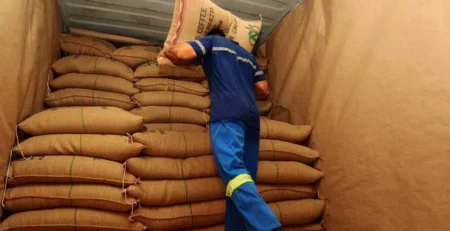Kenya’s Fresh Produce Exports Struggle as Cold Chain Gaps Hit Cargo Reliability

Nairobi – June 30, 2025
At Jomo Kenyatta International Airport, pallets of roses and green beans are wrapped, sealed, and rushed into cooling bays. But on several flights this week, shipments left the tarmac with internal temperatures already compromised—barely within export tolerances.
Kenya’s air cargo sector, long praised for its role in East Africa’s export economy, is now under pressure. As volumes rise and margins tighten, exporters are facing a cold truth: the country’s cold chain infrastructure is falling behind demand.
“What’s hurting us isn’t the lack of planes—it’s the hour between the packing house and the cargo hold,” says Linet Opondo, operations manager at a leading flower exporter.
A System Under Stress
While global demand for fresh African produce continues to grow—particularly in the Middle East and Europe—Kenya’s logistics ecosystem is straining. Refrigerated truck availability remains limited. Airport handling teams are overbooked. And recent mechanical failures at Nairobi’s main cold storage warehouse have added to the risk.
“Even a 2-degree Celsius deviation during preloading can impact shelf life dramatically,” warns Opondo. “Buyers notice. And they remember.”
High Stakes, Low Buffers
The air cargo boom has created opportunities, but also pressure to perform with little margin for error. Missed temperature targets can void contracts or trigger price penalties. In the last quarter alone, one export consortium reported losses of over $600,000 attributed solely to cold chain failures—not delays or cancellations, just temperature mishandling.
Investments Are Coming—But Slowly
Kenya’s Civil Aviation Authority has approved plans for a second cold storage terminal at JKIA, and international donors have pledged support for new truck fleets with modern reefer capacity. But until these projects materialize, exporters are left to improvise—often using backup ice packs, night pickups, or manual monitoring to hold the line.
“We know what to do,” Opondo adds. “We just need the infrastructure to do it right—consistently.”
The post Kenya’s Fresh Produce Exports Struggle as Cold Chain Gaps Hit Cargo Reliability appeared first on The Logistic News.
Share this post
Related
Posts
Brazil’s Coffee Exporters Hit Capacity Limits at Santos Port as Harvest Peaks
Santos – June 30, 2025 At dawn, a line of trucks waits outside Warehouse 31 in Santos. Each one carries green...
Kenya’s Fresh Produce Exports Struggle as Cold Chain Gaps Hit Cargo Reliability
Nairobi – June 30, 2025 At Jomo Kenyatta International Airport, pallets of roses and green beans are wrapped, sealed, and rushed...
Rerouting Reality: Drought Turns Panama Canal Into a Strategic Risk
Panama City – June 30, 2025 At 6:40 a.m., with the heat already pressing against the steel decks, a bulk carrier...
Mid-Market Logistics Players Turn to Mergers Amid Industry Uncertainty
SINGAPORE – June 30, 2025 It started with a phone call between two competitors. One in Johor Bahru, the other in...




